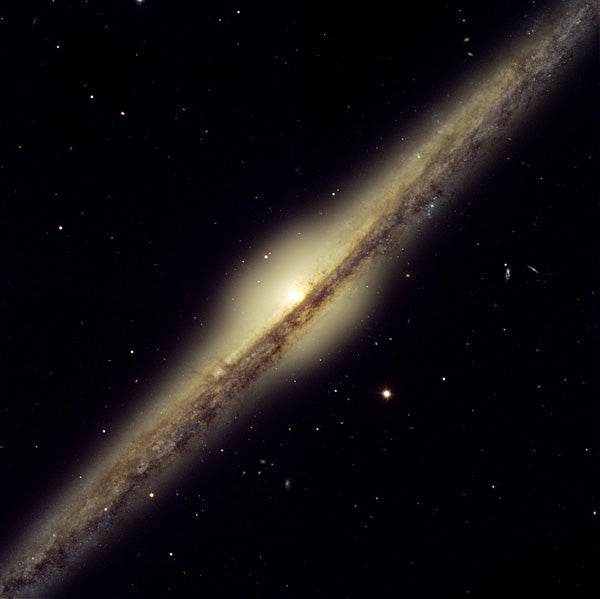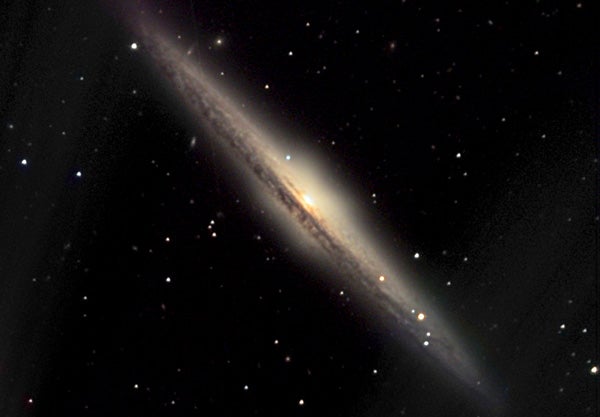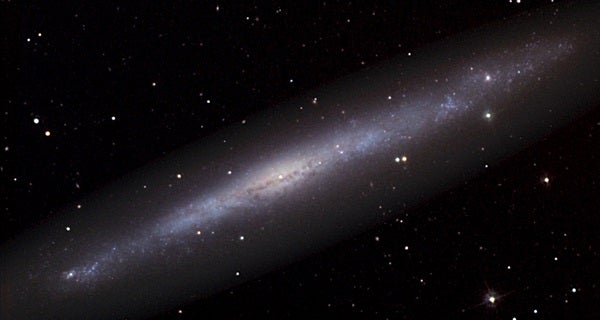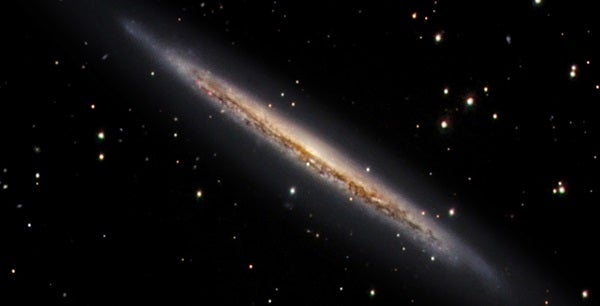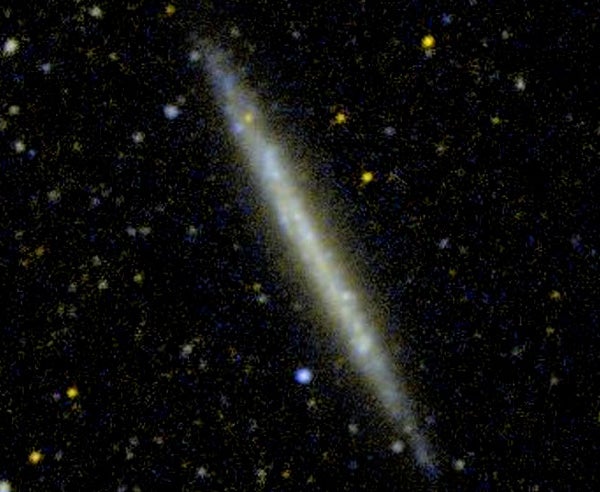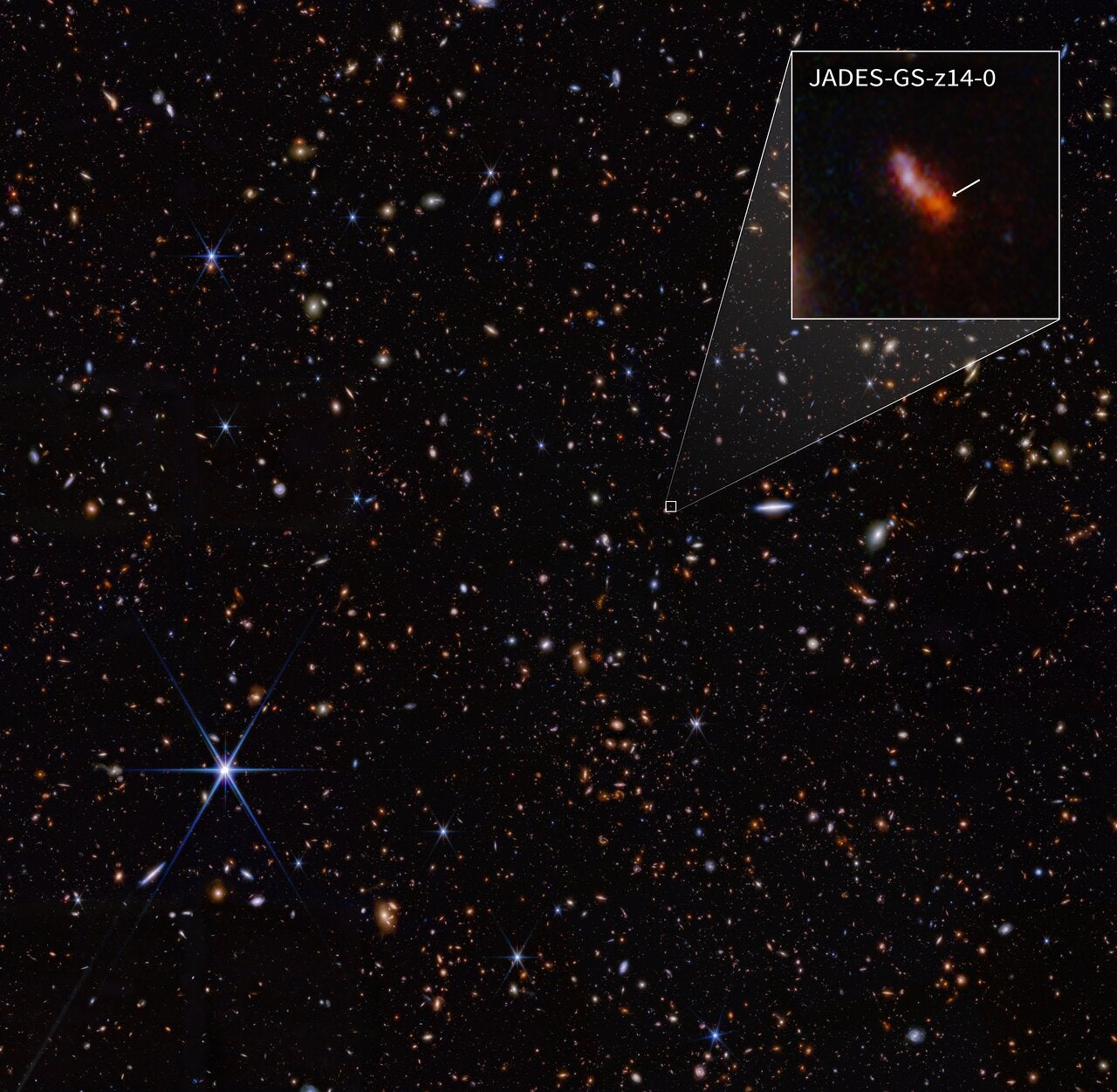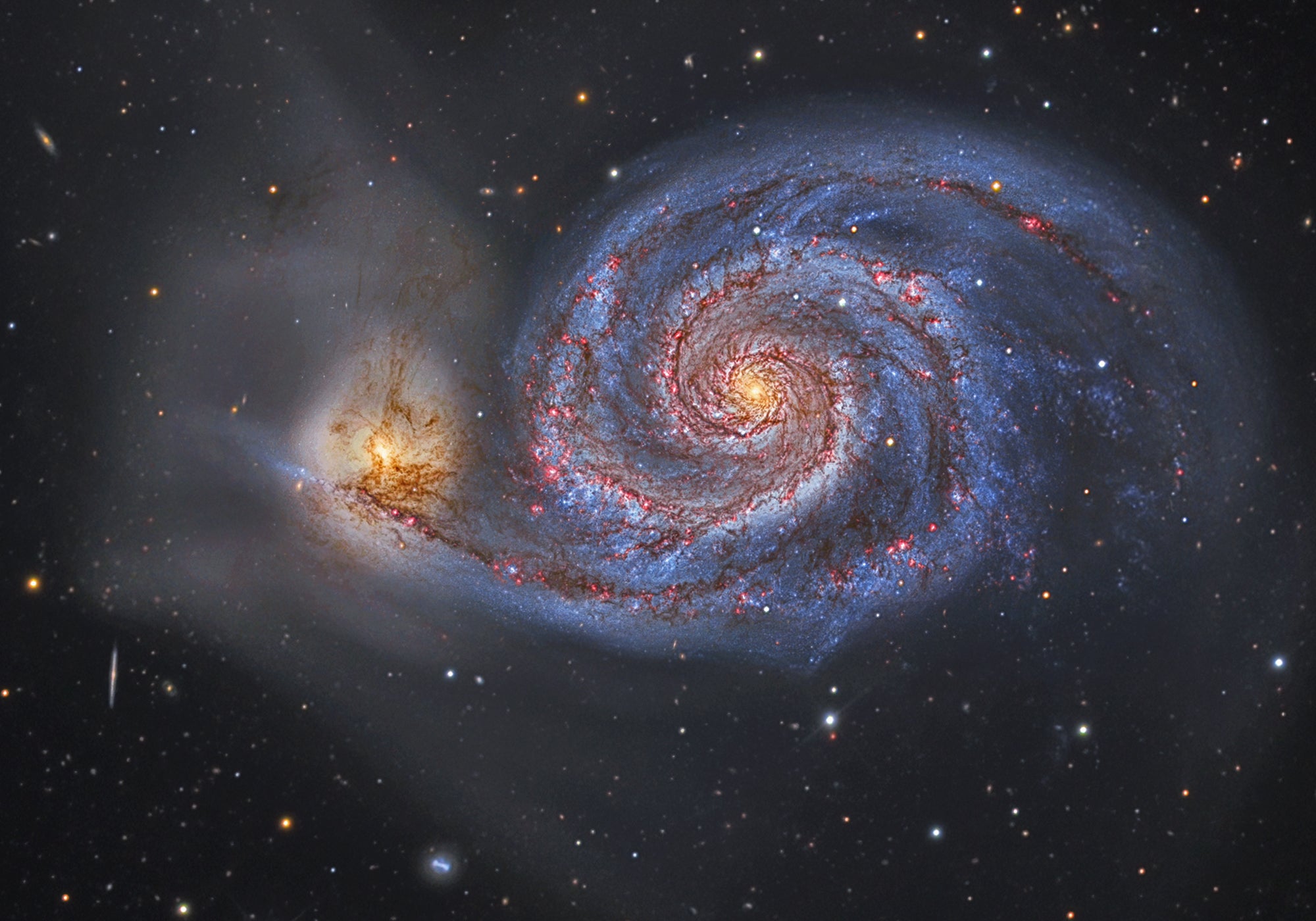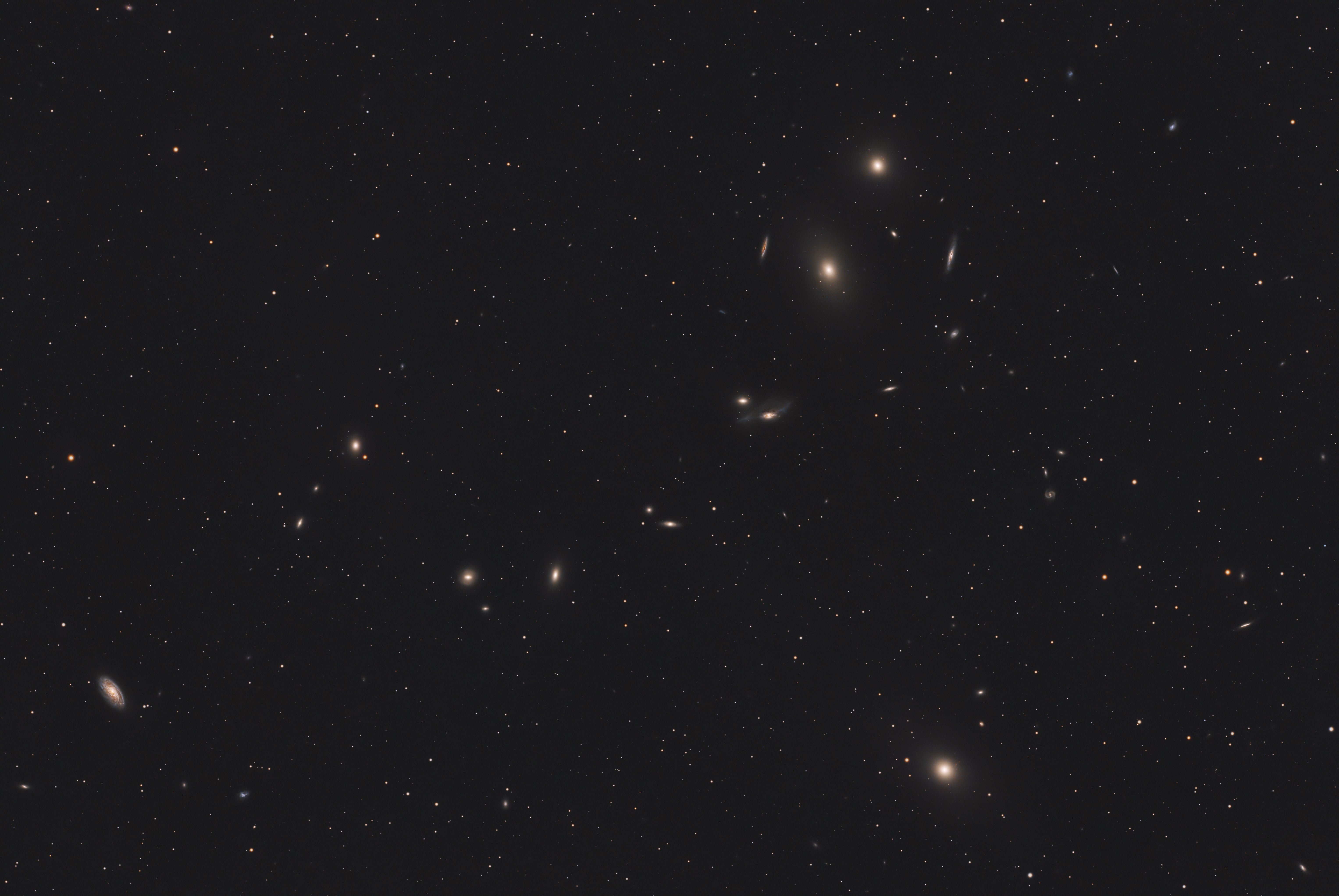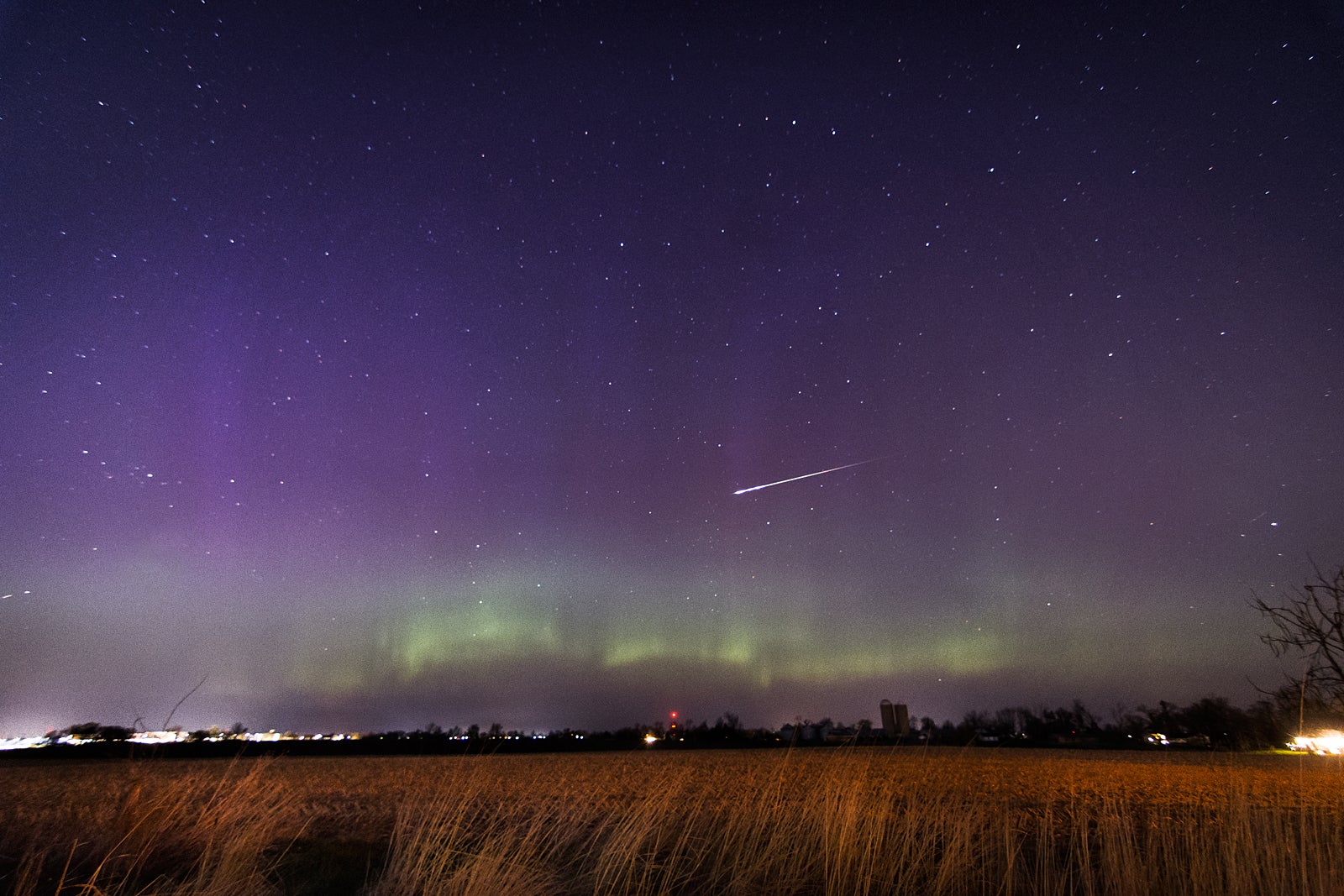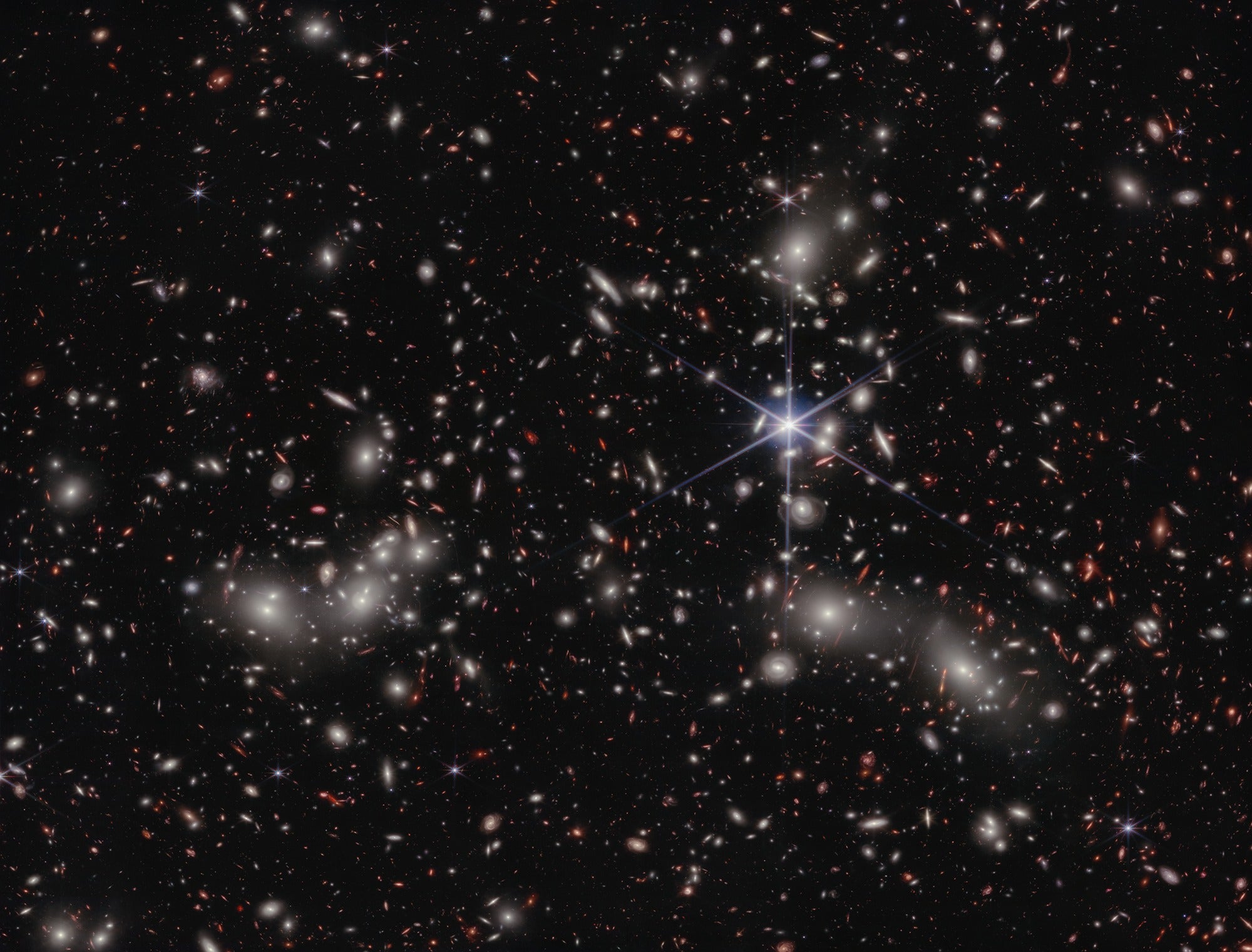Larry Mitchell of Houston, Texas, inspired this month’s column. At the May 2010 Texas Star Party (TSP), Mitchell handed out a list of 50 edge-on galaxies (some super-thin and super-faint). He challenged attendees to observe any 20 during the weeklong event. Though I did not attend that star party, Mitchell did send me the list and asked me to try to find some of the brighter ones with my Tele Vue 5-inch f/5 refractor. The search was so much fun, I decided to create an adapted list of five perfectly edge-on galaxies visible in small telescopes shortly after sunset this month. See how dim and slim you can see.
Perfect form
Let’s take a moment to ponder the straight lines exhibited by these extragalactic Slim Jims and why they attract our attention. Plato argued that seeing a straight line is a true form of pleasure. In Plato’s Philebus, Socrates argues that the straight line is “eternally and absolutely beautiful.” It gives the observer a peculiar delight “quite unlike the pleasures of scratching.”
In ballet, perfect line equals perfect form and emphasizes aesthetic beauty. The use of line in dance also helps create an illusion of expansion: It compels the mind’s eye to extend the force of the dancer’s energy beyond the body into space, creating the illusion of boundless length.
Likewise, the mind’s eye can force us to see light from edge-on galaxies extend beyond their true linear shape as if they’re performing for us. If nearby stars happen to align with the galaxy’s major axis, the mind’s eye will stretch the galaxy’s light even farther as it “connects the dots.” This illusion becomes most apparent at low power. (It’s the same effect that tricks one into seeing canals on Mars.) Edge-on galaxies also have the added dimension of mystery; most of their structure lies hidden, which entices us to wonder.
The “itch” list
As I mentioned, the five galaxies included below are all perfectly edge-on. I’ve listed them in order of increasing difficulty to see, from 1 (easiest) to 5 (most challenging). They also have varying degrees of flatness. You’ll find that those with prominent bulges are easiest to detect. Good luck!
1 Warm up your eyesight by seeking NGC 4565. This classic beauty lies about 2° east of 17 Comae Berenices in the naked-eye web of starlight known, not surprisingly, as the Coma Berenices Cluster. Shining at magnitude 10.4 (with a surface brightness of 12.9), the galaxy cuts across the field of view of my 5-inch as a ¼°-long wafer of light with a prominent central hub. At high powers, a significant dust lane splits the already-thin disk into two parallel threads of light. As with all the galaxies to follow, the most magnificent views come with keen averted vision, when the galaxy appears to burn more brightly on the edges of the eye’s retina.
2 NGC 5746 in Virgo is another long and lean precise jewel. Many fail to see it because of its location in a barren tract of naked-eye sky between Virgo and Boötes. But all you have to do is find 3.7-magnitude 109 Virginis. The magnitude 11.3 galaxy (actually, my visual estimate makes it two magnitudes brighter) lies only 20′ west of that star. Mitchell likens it to a smaller version of NGC 4565. Though it appears half the length and width of NGC 4565, NGC 5746 has a higher surface brightness (12.3). Still, it can fade from view with a direct gaze. Through my 5-inch at high power, the galaxy has a tiny but bright bulge “balanced” on the thin disk like a pearl on a silver blade. It will take concentration and magnification to detect the long wisps of dust running along NGC 5746’s major axis, but give it a go anyway.
3 Another galaxy from Mitchell’s list, gorgeous NGC 4244, exceeds NGC 4565 in length by 3′, but it is half a magnitude fainter and has a much lower surface brightness (14.2). Curiously, while also slightly wider, NGC 4244’s disk appears flatter. The galaxy’s bulge hardly protrudes above its plane, causing the galaxy to look more like a long and thin spindle, earning it the nickname “The Silver Needle.” Consequently, it appears less impressive to the eye at a glance. But with time and attention through my 5-inch, this extragalactic wonder — 4.7° south-southwest of 4th-magnitude Beta (β) Canum Venaticorum — is an alluring sight. The galaxy’s disk gradually fades away from an elliptical central enhancement toward field stars, which compel the eye to extend the galaxy’s apparent length beyond its true limits.
4 NGC 5907 in Draco, also on Mitchell’s list, rivals NGC 4244 in brightness but is slightly smaller (12.8′) and narrower (1.4′). It’s about 3° south-southwest of 3.3-magnitude Iota (ι) Draconis, and nearly 1.5° east-northeast of the magnificent lenticular galaxy NGC 5866. Through the 5-inch at low power, NGC 5907 appears as an anemic splinter of light. With magnification, it transforms into a razor-sharp ray with a dim, impertinent bulge — a tear in the fabric of space, as if from a cat’s claw. In fact, while its most common nickname is the Splinter, I call it the Cat Scratch Galaxy. With concentration, I can see milkweed-thin hairs of dust in the flat disk, a mesmerizing sight at high powers. The disk’s length tapers off ever so gradually on either end; each tip seems to slip gracefully into the deep inky-dark depths of space beyond, like a sinking vessel.
5 NGC 5023 in Canes Venatici, a magnitude 12.9 waif of thinness, certainly lives up to Mitchell’s challenge. With my 5-inch at low power, I couldn’t see the galaxy, which measures only 7.3′ in length but 0.8′ in width. After cranking up the power, the galaxy materialized out of the darkness 3.6° north-northwest of the star 20 CVn like a phantom hair, faint and discrete.
Mitchell’s challenge
Each year at TSP, Mitchell offers attendees an advanced observing program, but he says his 2010 flat-galaxy challenge was “the most popular advanced program I’ve done. For some reason, these flat galaxies seem riveting to people, who consider them so much more fascinating than others.” You can find his full list at www.texasstarparty.org/tsp_10adv.pdf. As always, let me know of your results at someara@interpac.net.


